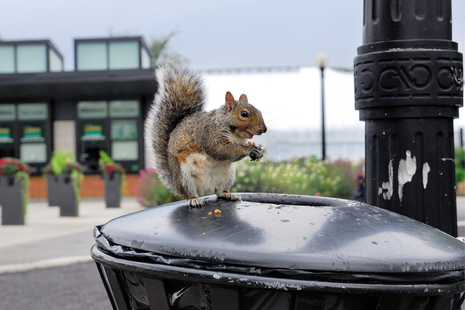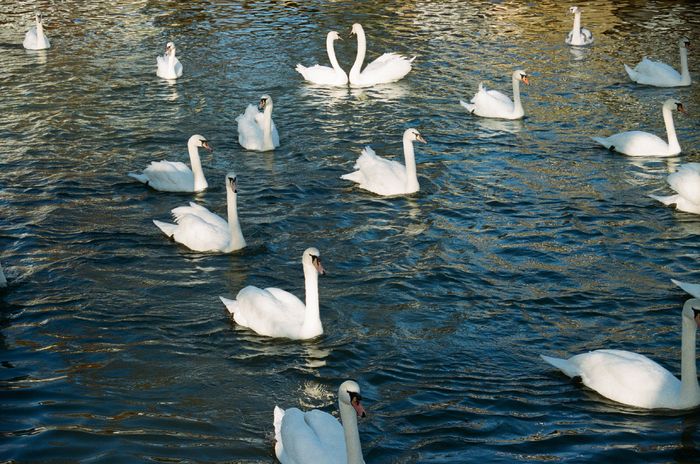The wonders of nature in Cambridge
Jack Byrne discusses Cambridge’s urban wildlife and how we should appreciate the world around us

As the light softened and the shadows lengthened outside the English Faculty on a late-April evening, a few people walked by and I watched as, unnoticed by all, a kestrel flew overhead clutching a mouse in its talons and disappeared from view. For a few seconds, I was transported far from Sidgwick site into an imagining of the Cambridgeshire countryside straight out of the writings of Enid Blyton or Kenneth Grahame, where the natural world plays out untouched by human presence. It could hardly seem more out of place silhouetted on the modern brick-and-glass buildings of the humanities faculties, as if edited in by a green-screen maestro in real time. And yet, as I opened my eyes and ears to the wildlife around me, the more I realised that this is far from a rare occurrence. A badger dashing across backs and into Johns late one night, the hooting of an owl carried through my window as I wake up in the middle of the night. Urban wildlife suddenly seems everywhere, vivid, and remarkably non-reliant on the human population to survive.
“Urban wildlife suddenly seems everywhere, vivid, and remarkably non-reliant on the human population to survive”
The urban landscape is, fundamentally, artificial. Everything from shelter and food sources, to threats, are all either created or controlled by humans, with the comfort and accessibility of people taking priority. Green spaces are a patchwork, separated from one other by roads and traffic that pose a continual threat to any animal attempting to explore urban spaces. And food is often simply what people throw away. These create a thoroughly unnatural habitat for any animal, a unique environment which has been orchestrated for a single species: us.
Rather obviously then, urbanisation leads to a loss of biodiversity. In a form of the process called biotic homogenisation, where native flora are replaced by a narrower selection of non-native ones, the development of towns and cities replaces the countryside with an environment dominated by an incredibly narrow spread of plant-life, with the majority of the biosphere simply being built over. For wildlife, this new environment presents them with entirely different selection processes, meaning that many animals are unable to adapt to an urban environment. Those that do adapt, change their habits of foraging away from the busiest parts of the day – normally to the early hours of the morning.
In Cambridge, we are in a fairly unique and privileged position. It seems self-evident, but the presence of the Cam and all of the central colleges creates a huge amount of green space, stretching in a band almost unbroken across the entire city. In the nature reserves and meadows alongside the Cam, the countryside is brought close to the very centre of the city, and all of the wildlife which is atypical in an urban environment. From the area around Grantchester, even deer can make their way into parts of Cambridge that hardly seem feasible. Crossing the Fen Causeway, a muntjac deer or two occasionally end up wandering around Coe Fen. By using the big back gardens of houses in south and southwest Cambridge, they make their way up to Wolfson and in the witching hour can be found grazing outside the front gate. Badgers, another species that don’t tend to gel well with a human habitat, seem to have colonised up the backs as far as Johns – and I am reliably informed that they are at least semi-permanent residents in Newnham. Backs, college gardens, and land owned by colleges along the river, create a corridor for non-urban wildlife to enter into Cambridge, with a continuous and more biodiverse urban fabric than can be found elsewhere, stretching along the river north towards Fen Ditton as well. What effectively functions as the core of the University, from Darwin and Newnham up to St Johns, is also the core route for wildlife in Cambridge. The relative lack of streets, and the swathes of green space, make the experience of spending time in this part of Cambridge more like spending time in say, Grantchester Meadows than Parker’s Piece. It is, with only minimal hyperbole, practically an extension of the countryside. The urban wildlife here is substantially more diverse than it is in other parts of the city, because urbanisation has touched it so lightly.
“Human-wildlife interactions lead to a reduction in individual stress and anxiety”
It doesn’t escape me that a majority of the University also traverses this area fairly often. Sidgwick Site is firmly in the centre of this wildlife haven, along with (by my counting) thirteen colleges, with seven more within two minutes’ walk. As students, we are in a prime position to experience and interact with these urban explorers, as our colleges form the routes which they travel along. Owls sit in trees next to college accommodations, while badgers burrow underneath them, like a diagram from a children’s nature book. Yet our interactions with these animals, and even our collective awareness of them, is shockingly minimal. To most, the presence of intrepid countryside animals in Cambridge passes by unnoticed, much as that kestrel did over Sidgwick. If thought about at all, these animals are only thought about in passing, perhaps prompted by a mention of someone else’s experience.
I remember my senior tutor making a comment about owls on the very first day of first year, and am certain that for many that was the last time the thought of owls in our city crossed their minds. And yet, this shouldn’t have to remain the case. Our interactions with urban wildlife can have a tangible effect on our wellbeing. Studies of human interactions with wildlife from Sweden, Hong Kong and Arizona have all turned out similar results: that human-wildlife interactions lead to a reduction in individual stress and anxiety. More generally, increased access to green spaces has been linked to higher cortisol levels, but being able to observe and interact with wildlife only heaps further benefits on top. Walks taken through green spaces by individuals recovering from psychological conditions were shown to have a higher restorative effect when those people spotted deer, or even squirrels. In terms of ambience, the sound of birdsong plays a particular role in positive mental health interactions.
 Features / Should I stay or should I go? Cambridge students and alumni reflect on how their memories stay with them15 December 2025
Features / Should I stay or should I go? Cambridge students and alumni reflect on how their memories stay with them15 December 2025 News / Cambridge study finds students learn better with notes than AI13 December 2025
News / Cambridge study finds students learn better with notes than AI13 December 2025 News / Dons warn PM about Vet School closure16 December 2025
News / Dons warn PM about Vet School closure16 December 2025 Comment / The magic of an eight-week term15 December 2025
Comment / The magic of an eight-week term15 December 2025 News / News In Brief: Michaelmas marriages, monogamous mammals, and messaging manipulation15 December 2025
News / News In Brief: Michaelmas marriages, monogamous mammals, and messaging manipulation15 December 2025









